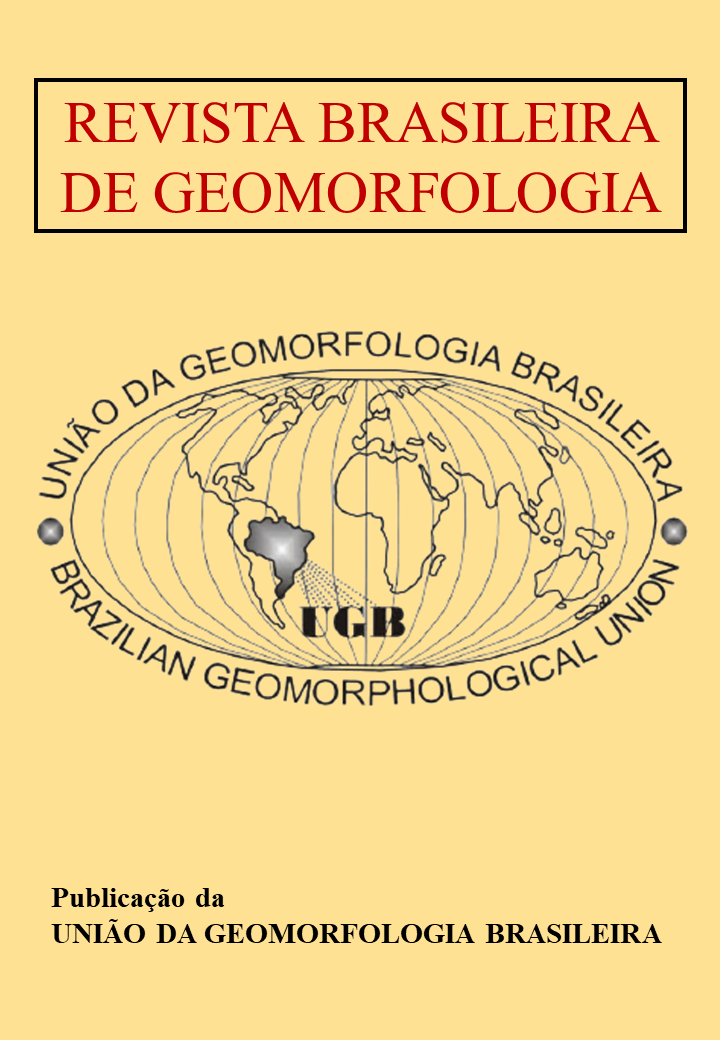GPR as a tool for studying geological structural control of gully development: Gouveia, Espinhaço Meridional Range, MG, Brazil
DOI:
https://doi.org/10.20502/rbgeomorfologia.v24i00.2323Keywords:
Regolith structure, geological and geomorphological factors, erosive features, subsurface analysis techniquesAbstract
Today, gullies constitute a serious environmental problem in several countries, including Brazil. This erosion process is associated with several causes, including inadequate land use and management and the natural characteristics of the slopes, such as the rocky substrate, which are not always observable in usual surveys of erosion susceptibility factors. In this work, we seek to identify and analyze the influence of the geological framework and relief elements, using ground penetrating radar (GPR), as a contribution to approaches to identifying factors associated with the development of gullies. The results of the study of a gully in an area dominated by granitoids in Serra do Espinhaço Meridional, municipality of Gouveia, MG, Brazil, whose advance upstream presents a deflection from its original orientation of W-L to SW-NE, suggest the influence of elements structural factors in directing evolution. Geomorphological factors also act through the action of relief modeling, whose processes expose the underlying rocks and accentuate the erosive power of surface runoff and infiltration of rainwater, through the increase in the slope of the slopes.
Downloads
Downloads
Published
How to Cite
Issue
Section
License

This work is licensed under a Creative Commons Attribution-NonCommercial 4.0 International License.
Author (s) retain copyright and grant the journal right of first publication with the work simultaneously licensed under the Creative Commons Attribution License that allows sharing the work with recognition of its initial publication in this journal.








